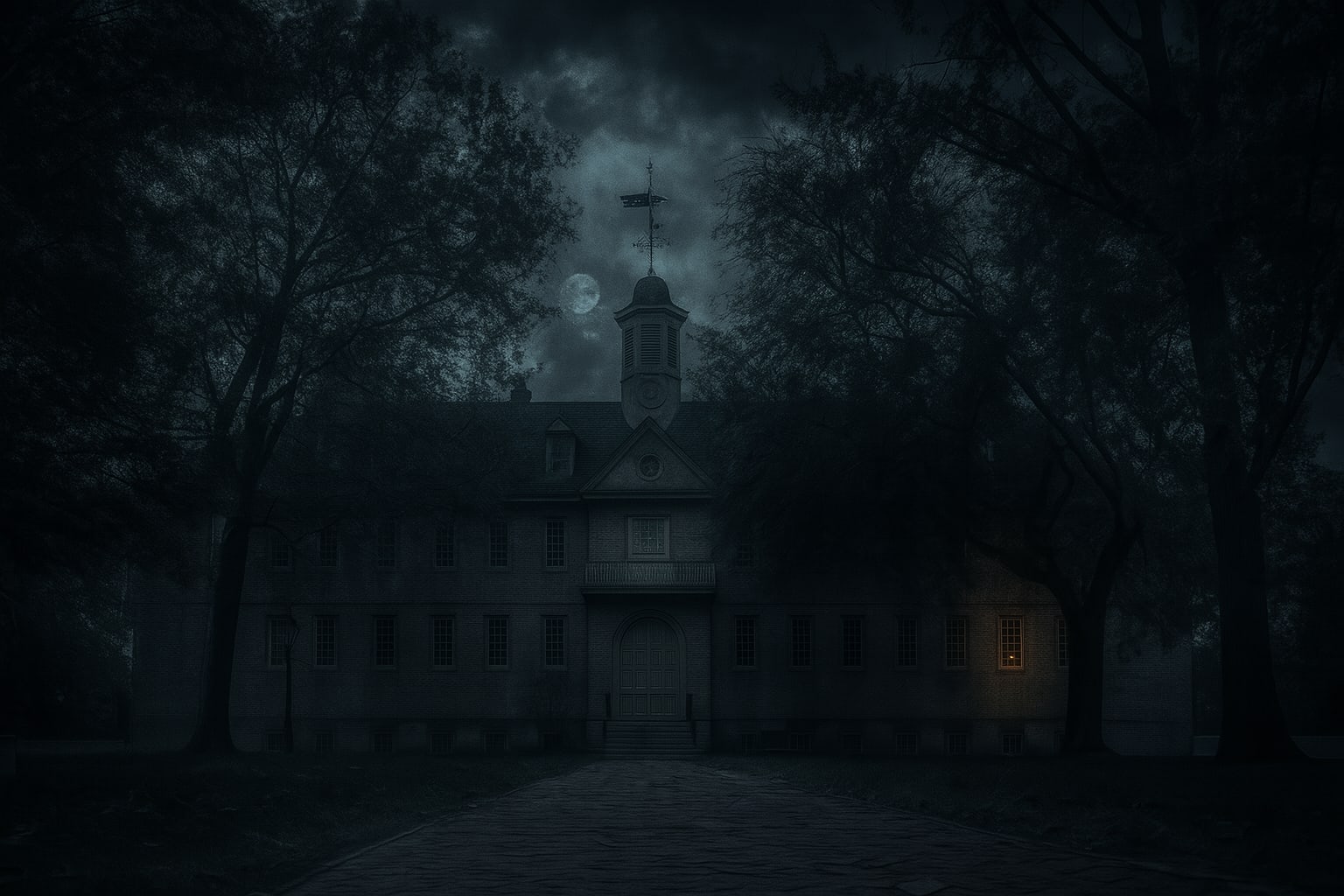Three Centuries of Academic Hauntings
The Sir Christopher Wren Building at the College of William & Mary stands as the oldest academic building in continuous use in America. Since 1695, it has educated presidents, revolutionaries, and countless others who shaped the nation. But not all students and faculty left after graduation or death - many remain, creating America's most haunted hall of learning. The building has survived three devastating fires, served as a Civil War hospital, and witnessed countless student tragedies. Each disaster added layers to its supernatural population. Today, phantom students attend invisible lectures, ghostly professors teach empty classrooms, and spirits from multiple centuries coexist in academic eternity.
Education Through Eternity
The Fire Victims
Three major fires destroyed the building, killing students and faculty trapped inside. The 1705 fire killed six students who were locked in their dormitory as punishment. Their ghosts still bang on doors, begging for release. The smell of smoke manifests randomly, and some visitors experience difficulty breathing in areas where students suffocated.
The Hospital Years
During the Civil War, the building served as a hospital for both armies. Wounded soldiers died in classrooms, their blood staining floors that refuse to come clean. These soldier-spirits still call for water, morphine, and their mothers. The Great Hall, used as an operating theater, echoes with phantom screams.
The Crypt Mystery
The building's crypt contains remains from the colonial era, identities unknown. These forgotten dead manifest as shadow figures, cold spots, and whispered Latin prayers. Some believe they're early professors or students who died during epidemics, buried hastily and forgotten.
The Eternal Student Body
The French Soldier
A French soldier from the Revolutionary War haunts the third floor. He appears in full uniform, speaking rapid French, apparently lost and looking for his regiment. Students report he sometimes attends French classes, correcting pronunciation from the back of the room before vanishing.
The Burned Students
The six students who died in the 1705 fire manifest as a group, still in their nightshirts, faces bearing burn marks. They appear in dormitory areas, warning current students about fire safety. Some students report being woken by these ghosts during actual fire alarms, pushed toward exits.
President Ewell
Benjamin Stoddert Ewell, who served as president and literally saved the college from closure, still guards his beloved institution. His ghost appears during times of crisis, walking the halls in academic robes, checking on the building's welfare. Staff credit him with preventing several modern disasters.
The Invisible Class
An entire phantom classroom manifests in the Blue Room - professor and students from the 1700s continuing their lessons. Modern students report entering to find a class in session, only to have everyone vanish when they realize they're not enrolled.
Academic Phenomena
The Sunken Gardens Spirits
The Sunken Gardens behind the building, built over a colonial cemetery, swarm with spirits at night. Students report seeing colonial figures, Native Americans, and Civil War soldiers all occupying the same space. The area is so active that security guards avoid it after midnight.
The Chapel Manifestations
The Wren Chapel hosts regular phantom services. Organ music plays when no one is at the instrument, hymns echo from empty pews, and some report seeing entire colonial congregations at worship. Weddings in the chapel often capture extra 'guests' in photographs.
The Crypt Phenomena
The crypt remains the building's most active area. Temperature drops of 30 degrees are common. Visitors report being touched, pushed, and hearing whispers in dead languages. Some experience visions of colonial Williamsburg, as if the dead are sharing their memories.
Enrolling in the Supernatural
The Wren Building remains central to William & Mary's campus, hosting classes, events, and tours. Students treat their ghostly classmates as part of tradition, leaving offerings before exams and thanking helpful spirits for wake-up calls. The building offers historical tours, though guides carefully phrase paranormal activity as 'campus legends.' However, they'll point out the most active areas and share 'stories' that are clearly personal experiences. Night access is restricted, but students with legitimate reasons to be in the building after dark report intense activity. Study groups often relocate after encounters with the invisible class or soldier spirits. The Wren Building's ghosts seem largely benevolent, more interested in continuing their education or duties than frightening the living. They represent every era of American academic life, creating a supernatural university where learning transcends death. Whether you're interested in colonial architecture, academic history, or paranormal encounters, the Wren Building delivers. Just remember - in this hall of learning, some students have been attending classes for centuries, and some professors never stop teaching, even after death.

